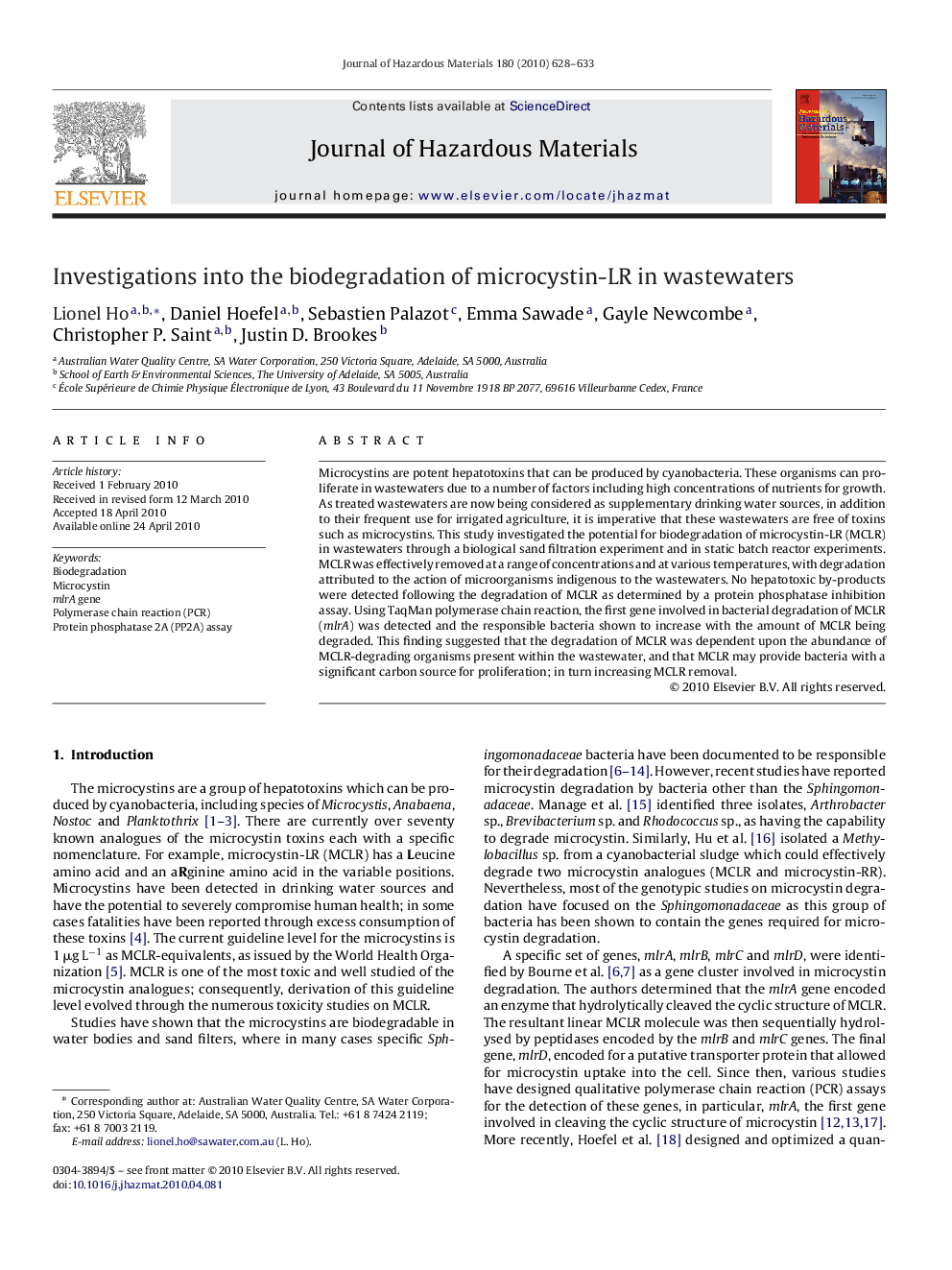| Article ID | Journal | Published Year | Pages | File Type |
|---|---|---|---|---|
| 580106 | Journal of Hazardous Materials | 2010 | 6 Pages |
Abstract
Microcystins are potent hepatotoxins that can be produced by cyanobacteria. These organisms can proliferate in wastewaters due to a number of factors including high concentrations of nutrients for growth. As treated wastewaters are now being considered as supplementary drinking water sources, in addition to their frequent use for irrigated agriculture, it is imperative that these wastewaters are free of toxins such as microcystins. This study investigated the potential for biodegradation of microcystin-LR (MCLR) in wastewaters through a biological sand filtration experiment and in static batch reactor experiments. MCLR was effectively removed at a range of concentrations and at various temperatures, with degradation attributed to the action of microorganisms indigenous to the wastewaters. No hepatotoxic by-products were detected following the degradation of MCLR as determined by a protein phosphatase inhibition assay. Using TaqMan polymerase chain reaction, the first gene involved in bacterial degradation of MCLR (mlrA) was detected and the responsible bacteria shown to increase with the amount of MCLR being degraded. This finding suggested that the degradation of MCLR was dependent upon the abundance of MCLR-degrading organisms present within the wastewater, and that MCLR may provide bacteria with a significant carbon source for proliferation; in turn increasing MCLR removal.
Related Topics
Physical Sciences and Engineering
Chemical Engineering
Chemical Health and Safety
Authors
Lionel Ho, Daniel Hoefel, Sebastien Palazot, Emma Sawade, Gayle Newcombe, Christopher P. Saint, Justin D. Brookes,
